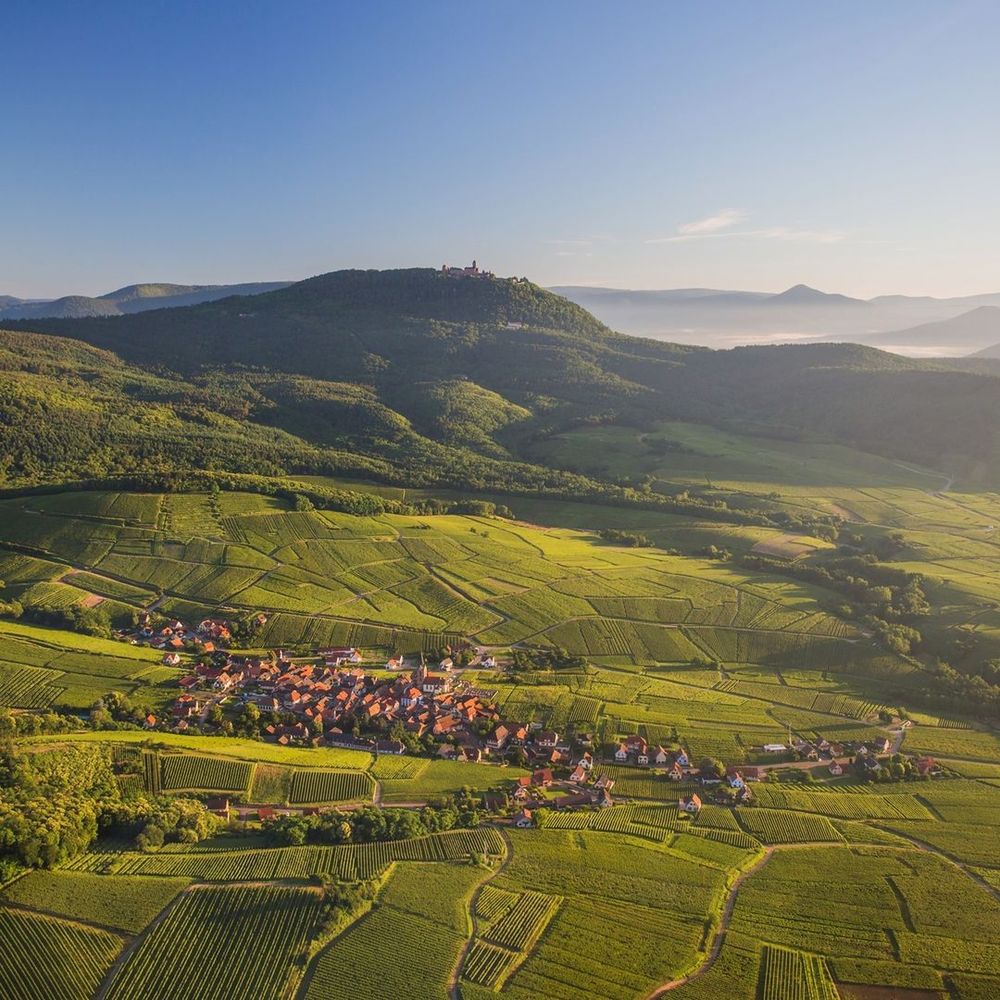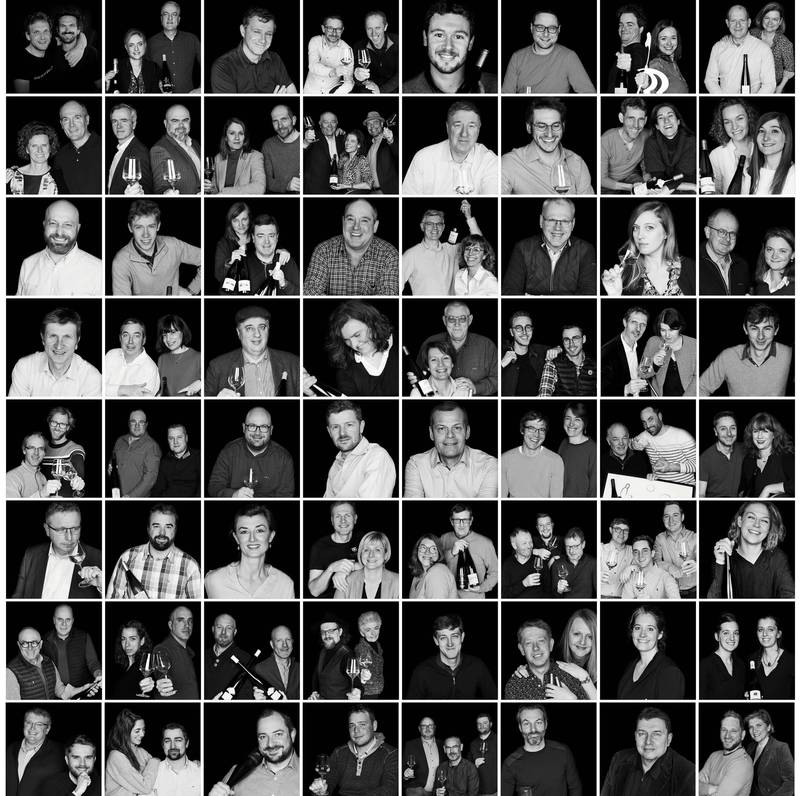“If I drew one overwhelming conclusion from the event, however, it was a reminder that I really do need to drink a lot more Gewürz…” writes Kermode.
“Everything a real wine fair has”, we were promised, as the wine world’s latest virtual virtuoso, Millésimes Alsace, made its debut.
Another traditional trade show takes itself into the ether as the latest coronavirus variant does battle with the vaccination programme? Well, yes, up to a point, but the registered trademark for the name ‘Digi-tasting’ and the claims about limiting travel to allow us to cut our carbon footprint suggested this particular move online could perhaps be a permanent one for organisers VinsAlsace. We shall see.

Occupying a surface area of about 15500 hectares, Alsace geology is a like a mosaic, from granite to limestone along with clay, shale, and sandstone.
Established in 2012, the Salon Millésimes Alsace is a biennial showcase for the region; an opportunity to sample its wines, to network with its producers and, of course, to pair suppliers with importers. Attempting to do all of that virtually, for its fifth outing, was no small undertaking.
Offered packs of up to 40 miniature samples, each 3cl and bottled under nitrogen, we could choose from a total of 400 options, across 100 different producers, each with their own virtual ‘stand’. Miraculously, these made it across the Channel in good time, without being impounded or held hostage by our friends at HM Customs and Excise, so that was a good start, suggesting a real command of the paperwork that’s now required. Meetings could be scheduled across the three days of the virtual event; a generous commitment of time from the producers concerned.
Interestingly, there was also an attempt to replicate the conference feel we’d usually expect at such an event, with well-produced short films and recorded, translated debates across three different themes: new trends in wine, respect for the environment and the importance of terroir. These topics were, as you would expect, pertinent for Alsace, with its intricate patchwork of different soils and pioneering approach to organic – representing a third of the region’s vines – and biodynamic agriculture. The debate on trends suggested a bright future for Alsatian Crémant, along with its distinctive light red wines and fresh, textured dry whites. There was perhaps less obvious comfort for those producing sweeter wines, which is, of course, very much a sign of the times.

In order to compare and contrast, I decided to approach the entire tasting in one go, rather than scheduling a meeting for each individual box of samples, as was suggested. The only problem with this approach: most of the miniatures needed a few minutes to settle and express the character that I knew from previous experience to be there. This posed a challenge for me personally, but – to be fair – this was not the way the event had been designed and those able to allocate a full couple of days for meetings would have had plenty of time to let the samples breathe.
Admittedly, a few bottles were out of condition, but almost all of these had been flagged in advance. I was sad to be told to discard the Zind-Humbrecht selection, for example. Tasting miniatures have been something of a saviour in these times, but the technology is still a work in progress. If I drew one overwhelming conclusion from the event, however, it was a reminder that I really do need to drink a lot more Gewürz…
My top 10 tasting highlights from the wines I selected:

Justin Boxler, Pinot Gris ‘Au Pied du Bari’ 2019, a new cuvée from a plot at the foot of the Grand Cru Sommerberg, which also goes by its Alsatian name of ‘Bari’. The nose is restrained, with delicate lemon zest and apple blossom, the texture offers gentle unfolding layers of bright citrus and stone fruit, with a clean mineral finish.
Domaines Schlumberger, Alsace Grand Cru Saering Riesling 2017, with an inviting nose of white grapefruit and mandarin, the palate is dry, complex and saline,with a lovely savoury, slightly smoky undertow that lingers.
Domaines Schlumberger, Alsace Grand Cru Kitterle Gewürztraminer 2012, a slightly evolved nose of wild honey, candied orange and ripe Williams pear, is followed by butterscotch, apricots and white pepper. Perfectly poised, rich textured, the ripe citrus is delicately dappled with dots of honeycomb and there’s a delicious mineral lick.
Domaine Bott-Geyl, Alsace Grand Cru Mandelberg Riesling 2017, biodynamic, the nose has a fresh lime purity, the palate is perfectly poised with a delicious tension, the ripe citrus and stone fruit teased by a tart gooseberry acidity. A lovely long, elegant finish.
Domaine Bott-Geyl, Alsace Pinot Noir 2016, with a lovely savoury note to nose, rosehip, red cherry, quite evolved, with smooth, subtle spices and velvety smooth tannins, the finish is elegant and refined.
Dopff Au Moulin, Alsace Grand Cru Schoenenbourg Riesling 2017, an elegant nose of lime leaf, pink grapefruit and pineapple, the palate is saline and juicy fruited, well balanced and fresh, with a lingering savoury finish.
Dopff Au Moulin, Alsace Grand Cru Brand Gewürztraminer 2018, with a beautiful floral nose, wild honey, ripe apricots and quince paste, the rich ripe fruit is complemented by a savoury spice. This is still young and there’s still much to show.
Domaine Edmond Rentz, Alsace Grand Cru Sonnenglanz Riesling 2019, lime, green apple and white grapefruit, the fruit is lusciously ripe, but beautifully balanced and there’s a wonderful mineral note from nose to tail.
Lucien Albrecht Alsace Grand Cru Pfingstberg Pinot Gris 2018, from old vines, there’s an elegant citrus nose and a sweet herbal note, a rich bauble gold, with ripe peaches and apricots, a study in balance, the finish is long and complex.
Famille Hugel, Gewürztraminer, Vendanges Tardives 2010, with 100g of residual sugar, Hugel was a pioneer in late harvest wines and this offers rich, voluptuous, honeyed tropical fruit, ripe peaches and cream and a salted caramel note.









































